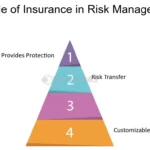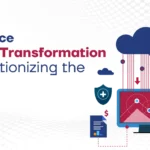Outline:
- Introduction
1.1 What is Captive Insurance?
1.2 Importance of Captive Insurance in the U.S. Economy - The Rise of Captive Insurance Companies
2.1 Historical Context and Growth Trends
2.2 Key Drivers Behind the Growth - Benefits of Captive Insurance for Businesses
3.1 Customization of Policies
3.2 Cost Savings and Efficiency
3.3 Risk Management and Control - Regulatory Environment of Captive Insurance
4.1 Overview of U.S. Regulations
4.2 Key States for Captive Insurance (e.g., Vermont, South Carolina, Delaware) - Challenges Faced by Captive Insurance Companies
5.1 Regulatory Compliance Issues
5.2 Capitalization Requirements
5.3 Risk Management Complexities - The Future of Captive Insurance
6.1 Emerging Trends and Technologies
6.2 Predictions for Industry Growth - Real-World Case Studies
7.1 Successful Captive Insurance Models
7.2 How Captive Insurance Transformed Businesses - Conclusion
8.1 Recap of Growth Factors
8.2 The Importance of Captive Insurance in Modern Business Strategy - FAQs
9.1 What is a captive insurance company?
9.2 How does captive insurance benefit businesses?
9.3 Which states are most favorable for captive insurance?
9.4 Can small businesses benefit from captive insurance?
9.5 What are the regulatory challenges of running a captive insurance company?
The Growth of Captive Insurance Companies in the U.S.
Captive insurance has seen exponential growth in the U.S. over the past few decades. As businesses seek more tailored and cost-effective solutions for managing risk, captive insurance companies have become a powerful tool. So, what exactly is captive insurance, and why is it growing so rapidly? Let’s dive into the details.
What is Captive Insurance?
Captive insurance is a form of self-insurance where a business creates its own insurance company to cover its risks. Essentially, a company (or a group of companies) forms an insurance subsidiary to provide insurance coverage for its parent company or related entities. The main idea is to take on the risk management responsibilities that would typically be handled by a traditional insurer.
Importance of Captive Insurance in the U.S. Economy

Captive insurance plays a significant role in the U.S. economy, especially in industries that face unique or high-risk exposures. By creating their own insurance companies, businesses have greater control over their risk management and financial strategies. This has been a key driver in the growth of this market. The ability to customize insurance products and cut down on the high costs associated with commercial insurance makes it an appealing option for many companies.
The Rise of Captive Insurance Companies
Historical Context and Growth Trends
The roots of captive insurance date back to the 1950s, but it wasn’t until the 1980s and 1990s that the concept truly began to take off. With rising commercial insurance premiums and the desire for more control over their insurance strategies, many large companies sought alternatives. The trend has only accelerated as businesses in various sectors—particularly in the U.S.—realize the value of captives.
Key Drivers Behind the Growth
Several factors have fueled the growth of captive insurance companies in the U.S.:
- Cost Efficiency: Traditional insurance premiums can be extremely costly, especially for businesses with specific or high-risk needs. Captives allow businesses to retain a portion of the risk, thus reducing overall insurance costs.
- Customization: Unlike standard policies from large insurance companies, captives offer bespoke solutions that can be tailored to meet the exact needs of a business, whether that’s in terms of coverage, risk management, or claims handling.
- Tax Advantages: Many U.S. states offer tax incentives for captive insurance companies, making it financially attractive for businesses to form their own insurers.
Benefits of Captive Insurance for Businesses
Customization of Policies
One of the main advantages of captive insurance is the ability to create highly customized policies. Unlike commercial insurers that often offer one-size-fits-all solutions, captive insurers allow businesses to craft insurance policies that fit their specific risk profiles. This flexibility can be invaluable, particularly for industries like manufacturing, healthcare, or energy, where standard policies may not provide adequate coverage.
Cost Savings and Efficiency
Over time, captive insurance can lead to significant cost savings. By removing the middleman (traditional insurance providers), businesses can lower administrative costs and reduce premiums. Furthermore, captives allow for more efficient claims management, since businesses have direct control over the claims process.
Risk Management and Control
Captive insurance allows businesses to retain a higher level of control over their risk management strategies. Companies can decide how much risk they want to retain and how to mitigate it, rather than leaving these decisions in the hands of an external insurer. This level of control is particularly useful for businesses with complex or specialized risks.
Regulatory Environment of Captive Insurance

Overview of U.S. Regulations
While captive insurance offers significant advantages, it also operates within a complex regulatory environment. In the U.S., captive insurance is regulated at both the federal and state levels. Each state has its own rules and regulations governing captive insurance, and these rules can vary widely. However, there is a general trend towards encouraging the establishment of captive insurance companies, given their economic and job-creation benefits.
Key States for Captive Insurance
Some U.S. states are particularly friendly to captive insurers, providing favorable laws, tax incentives, and robust regulatory frameworks. The most notable of these states include:
- Vermont: Known as the “captives capital of the world,” Vermont is home to a large number of captive insurance companies. It has a long history of supporting the captive insurance industry and offers favorable tax treatment.
- South Carolina: South Carolina has seen rapid growth in its captive insurance sector, offering a competitive regulatory environment and streamlined processes for setting up captives.
- Delaware: Delaware is another key state for captives, known for its strong legal infrastructure and favorable business laws.
Challenges Faced by Captive Insurance Companies
Regulatory Compliance Issues
Despite the growth, captive insurance companies must navigate a maze of regulatory requirements. Compliance with state and federal regulations can be a significant burden, particularly for smaller businesses. Additionally, changes in laws or the introduction of new taxes could affect the financial viability of captives.
Capitalization Requirements
To set up a captive insurance company, businesses must meet certain capitalization requirements. These requirements vary by state but can represent a significant upfront cost for companies looking to form their own insurer.
Risk Management Complexities
While captives offer greater control over risk management, they also come with their own set of challenges. Companies must be diligent in assessing their risks and managing their captives effectively to avoid financial loss.
The Future of Captive Insurance
Emerging Trends and Technologies
As the business landscape evolves, so too will captive insurance. One of the emerging trends is the increased use of technology to enhance the efficiency of captives. From AI-driven risk assessments to blockchain-based claims processing, technology will continue to play a key role in shaping the future of captive insurance.
Predictions for Industry Growth
Looking ahead, experts predict that the growth of captive insurance will continue, especially as businesses face increasing risk exposures in areas like cybersecurity, climate change, and global supply chains. The ability of captives to provide tailored solutions to these emerging risks will make them an essential part of the risk management landscape.
Real-World Case Studies
Successful Captive Insurance Models
Some of the most successful captives are those created by large corporations like Coca-Cola, Toyota, and Disney. These companies have been able to leverage their captives to provide more comprehensive coverage and significant cost savings.
How Captive Insurance Transformed Businesses
Smaller businesses, too, have benefitted from captives. Many businesses in sectors such as healthcare, construction, and agriculture have used captives to create customized policies that protect them from the unique risks they face.
Conclusion
In conclusion, the growth of captive insurance in the U.S. is a testament to the increasing desire among businesses to take control of their risk management. With benefits such as cost savings, customized policies, and improved risk management, it’s no wonder that more and more businesses are turning to captives. However, as with any financial strategy, it’s important for companies to be aware of the regulatory and operational challenges involved.
FAQs
What is a captive insurance company?
A captive insurance company is an insurance company created by a business to cover its own risks rather than purchasing coverage from a traditional insurer.
How does captive insurance benefit businesses?
Captive insurance allows businesses to customize policies, reduce costs, and maintain greater control over their risk management strategies.
Which states are most favorable for captive insurance?
States like Vermont, South Carolina, and Delaware are known for their favorable regulations and tax incentives for captive insurers.
Can small businesses benefit from captive insurance?
Yes, small businesses can also benefit from captive insurance, especially if they face specific risks or want to save on insurance premiums.
What are the regulatory challenges of running a captive insurance company?
The regulatory challenges include compliance with varying state laws, meeting capitalization requirements, and managing the complexities of risk assessment and claims handling.








